Uganda, often referred to as the “Pearl of Africa,” is not just renowned for its stunning landscapes and diverse wildlife but also for its rich and flavorful cuisine. Rooted in a fusion of indigenous traditions and colonial influences, Ugandan food is a medley of vibrant colors, bold flavors, and unique ingredients.
In this article, we invite you on a mouthwatering journey through Uganda’s culinary landscape, where each dish tells a story and leaves an indelible impression.
Matooke
The heart and soul of Ugandan Cuisine at the core of Ugandan gastronomy lies matooke, a traditional dish made from steamed green bananas. Soft and creamy in texture, matooke is often served with succulent stews or sauces, such as groundnut sauce or beef stew. This iconic dish showcases the Ugandan love for bananas and their importance in local culture.
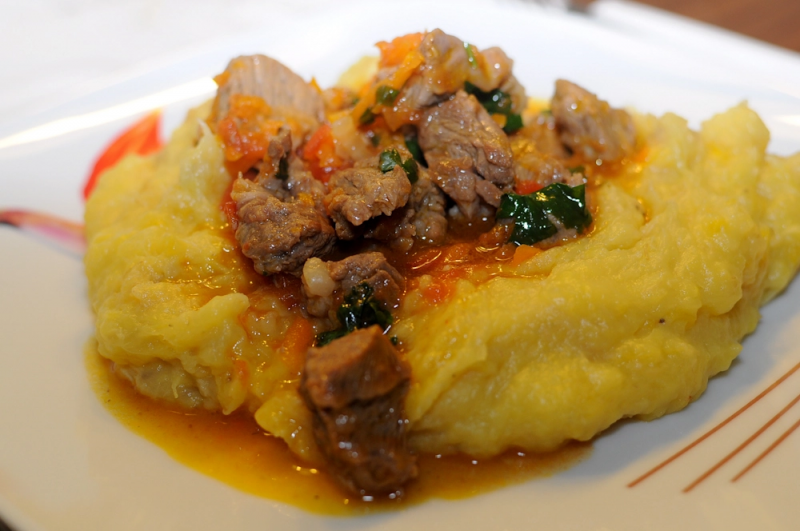
Rolex
A street food sensation if you’re craving a quick and flavorful bite, look no further than Uganda’s famous “rolex.” No, we’re not talking about the luxury watch! In Uganda, a rolex is a popular street food delicacy consisting of a rolled chapati filled with eggs, vegetables, and sometimes meat. It’s a delicious and portable meal that encapsulates the entrepreneurial spirit of Ugandan street food culture.
Everyone in Uganda—rich or poor—enjoys the popular street food (snack) known as “Rolex.” It entails consuming a chapatti along with some fried eggs, tomatoes, onions, and cabbage.
All of the wonderful foods from Uganda’s ethnicities and tribes are well-known, but none are as well-known as the Rolex. This is so that anyone can have it whenever they want and because it is simpler to create.
Given that the egg omelette is folded up inside a chapatti, it makes sense that the term “rolex” came from “rolled eggs.” The name of the Rolex was obtained from the process of making it, which includes rolling the eggs and chapatti together.
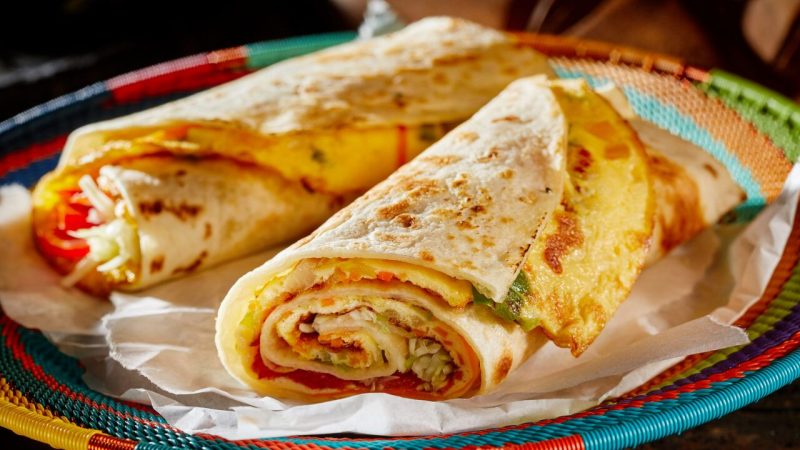
Kikomando
Kikomando Chapati has emerged as a popular and beloved dish across the country. This delectable combination of chapati bread and beans has become a staple for locals and a must-try for visitors exploring the vibrant street food scene in Uganda.
This dish has its roots in the street food culture of Uganda, particularly in the bustling capital city of Kampala. It is believed to have originated in the late 1990s and gained popularity due to its affordability, taste, and convenience. The word “Kikomando” is derived from the Luganda language, where “kikomando” translates to “army” or “military.” The dish earned this name due to its reputation for providing a filling and satisfying meal, similar to how soldiers need sustenance to fuel their demanding tasks.
Kikomando Chapati consists of two main components, chapati and beans. The chapati, a thin, unleavened flatbread, is made by kneading wheat flour, water, and a pinch of salt into a soft dough. The dough is then divided into small portions, rolled out into thin circles, and cooked on a hot griddle until golden brown. The chapati’s flaky and slightly crispy texture adds a delightful contrast to the meal.
Kikomando Chapati is predominantly sold by street food vendors and small eateries across Uganda, especially in urban areas. The dish is not only a quick and affordable meal option but also an integral part of Uganda’s street food culture. Locals and visitors alike often flock to these food stalls, enticed by the irresistible aroma and the promise of a delicious and satisfying meal.
The combination of soft, flaky chapati with flavorful, spiced beans creates a harmonious blend of textures and tastes. The mild heat from the spices, balanced with the cooling effect of the fresh vegetables, makes each bite a delightful sensory experience. Kikomando Chapati is a complete meal in itself, offering a balanced mix of carbohydrates, proteins, and essential nutrients.
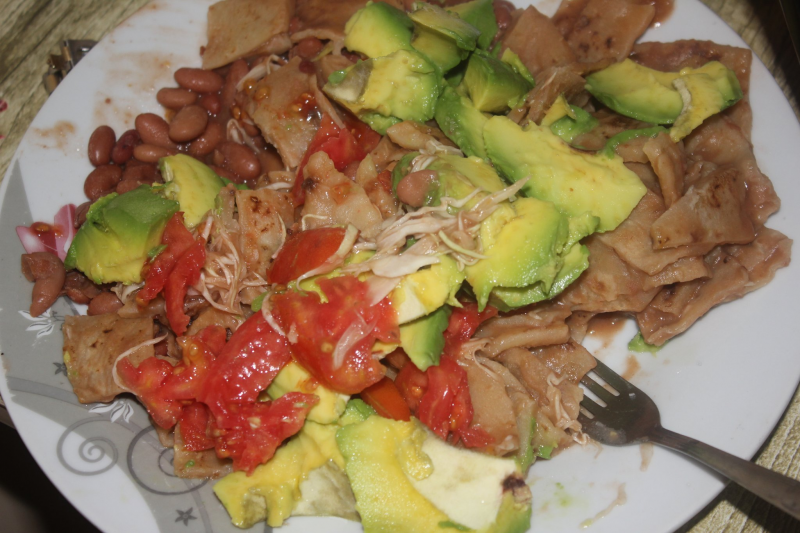
Luwombo
A royal feast prepare yourself for a regal treat with luwombo, a traditional Ugandan dish fit for kings and queens. Luwombo is a slow-cooked stew made with marinated meat or fish, vegetables, and a rich blend of spices, wrapped in banana leaves and steamed. The result is a heavenly blend of flavors that will transport your taste buds to a world of indulgence.
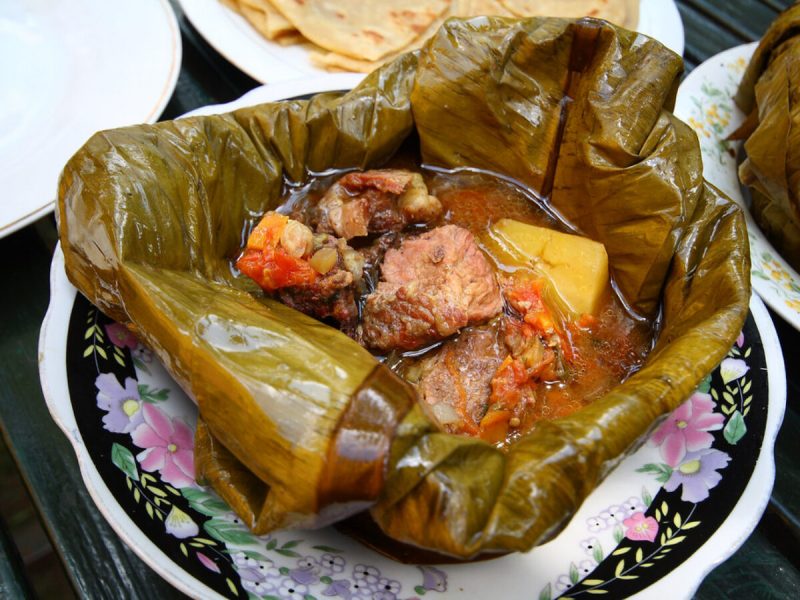
Matoke with G.nut Sauce
A perfect pairing while matooke on its own is delightful, it truly shines when paired with the iconic Ugandan groundnut (peanut) sauce. Creamy, nutty, and slightly spicy, this sauce adds a depth of flavor that perfectly complements the mildness of the matooke. The combination of these two culinary stars is a match made in Ugandan food heaven.
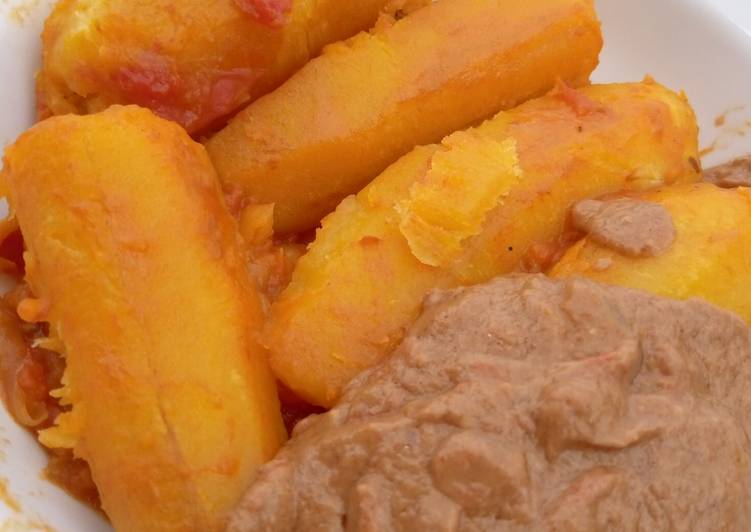
Ugandan Street Food
A Gastronomic adventure exploring Uganda’s street food scene is an adventure in itself. From the sizzling skewers of grilled meat known as “muchomo” to the crispy cassava chips, and the fiery “katogo” (a hearty breakfast dish with a mix of potatoes, bananas, and meat), the streets of Uganda are a treasure trove of mouthwatering delights waiting to be discovered.

Exotic Fruits
Nature’s sweet bounty Uganda’s fertile land blesses it with a cornucopia of exotic fruits that are as visually enticing as they are delicious. Indulge in juicy and succulent delights such as jackfruit, passion fruit, mangoes, pineapples, and avocados to mention but a few. These vibrant fruits not only offer a refreshing respite but also reflect Uganda’s natural abundance.

Uganda’s food scene is a captivating mosaic of traditional recipes, street food wonders, and nature’s bounty. The culinary delights of this East African country are a testament to the country’s rich cultural heritage and its people’s passion for flavor. Whether you’re savoring the simplicity of matooke or embarking on a street food adventure, Uganda’s cuisine promises to captivate your senses and leave you yearning for more. So, step into the world of Ugandan food and let your taste buds embark on an unforgettable journey of discovery.
Nsenene
Within this vibrant tapestry lies a culinary gem that is deeply cherished by Ugandans—the Nsenene. These small, winged insects make an annual appearance in Uganda, causing a frenzy among locals who eagerly await their arrival.
Nsenene, scientifically known as Ruspolia differens, are edible long-horned grasshoppers that swarm in Uganda during the rainy seasons, typically between October and December. They are attracted to bright lights and are often found congregating around street lamps and other sources of illumination. As the insects descend upon urban and rural areas, they create a palpable sense of excitement and anticipation among the locals.
The culinary traditions surrounding nsenene are deeply rooted in Ugandan culture. Harvesting nsenene is a communal activity that brings people together. Locals, both young and old, venture out with nets or traditional bamboo sieves to catch the insects. This process is accompanied by laughter, songs, and storytelling, making it a joyful occasion.
Once the nsenene are collected, they are thoroughly cleaned to remove dirt and debris. They are then prepared in various ways, reflecting the diversity of Uganda’s culinary landscape. The most common method of cooking nsenene is by frying them with onions, tomatoes, and spices. The resulting dish is a crispy and flavorful delicacy that is often enjoyed as a snack or served with staples like matooke (cooked green bananas) or posho (maize porridge).
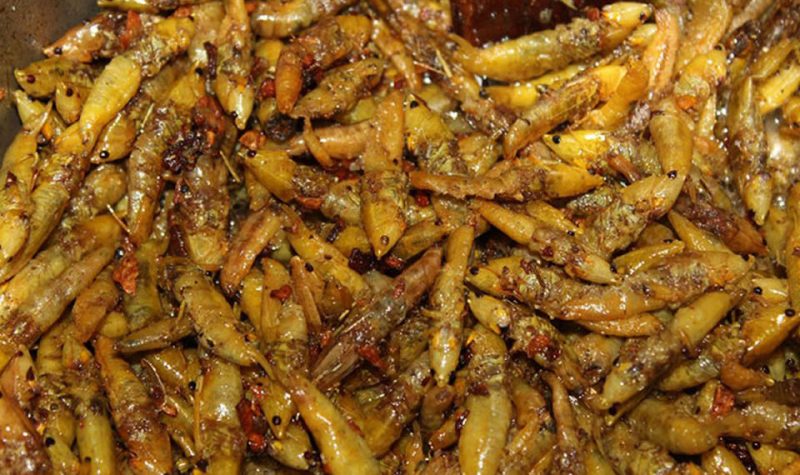
About Guide2Uganda
Guide2Uganda (www.guide2uganda.ug) is the most comprehensive source of travel information about Uganda on the web, with more content on its cities and towns, accommodations, attractions, events, museums, and galleries than any other online guide currently available for Uganda, as well as being a dynamic travel news and events driven site with new content added on a daily basis.
We are one of Uganda’s most powerful online media organizations, according to the WeFollow & Peer Index, which assesses online influence. Jumia Travel Uganda also awarded Guide2Uganda the “Best Destination Website in Uganda” at the 2018 Africa Travel Awards.
Share your travel stories & photos with the world via email: info@guide2uganda.ug



